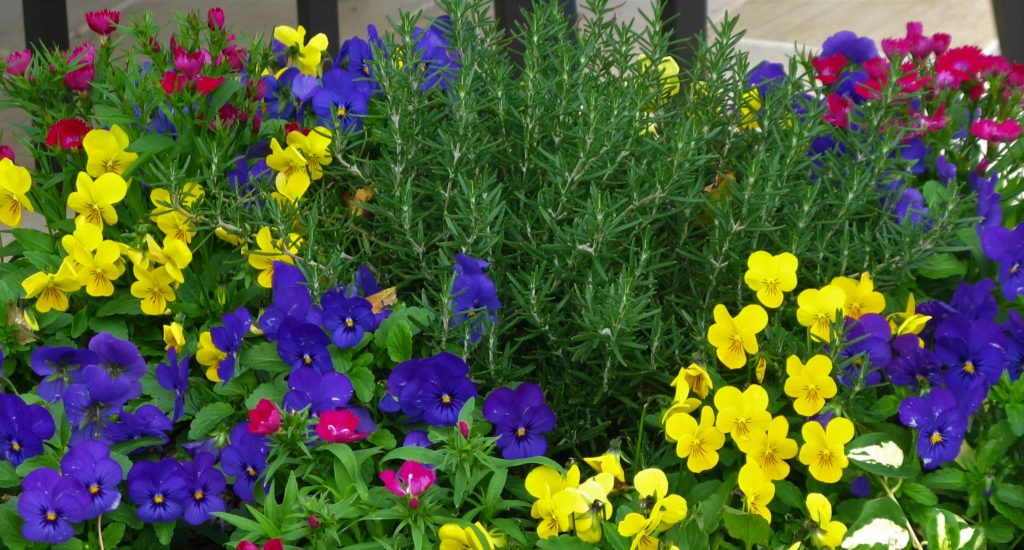
Containers are a great way to dip your toe into the gardening world. I see containers as mini gardens that are moveable, inexpensive, and easy to change up when you have a new idea. The key to container design is to begin with an anchor plant for a bit of height. In summer, this might be a one-gallon annual, such as a black-eyed susan. For winter, your best bet is to choose a small evergreen shrub as your anchor plant. Here I’ve chosen rosemary, but there are many other options. A few good ones are camellia sansanqua (fall-blooming camellia), sweet box, boxwood, small-leaved hollies, and distylium.
Once you’ve chosen an anchor plant, you’ll need filler plants, and for southern zones, pansies and violas work well. Pansies bloom all winter in sunny areas, but violas are a bit more flexible, blooming in sun or part sun. Here’s where you can play with color. At your local garden center, combine plants and colors until you’re happy. Don’t worry about what goes with what. You’ll often see blues and purples paired with lemon or yellow for winter, but there are lots of other options. All white designs can be beautiful, if you like simplicity. If orange makes you smile, try orange pansies paired with yellow and purple bi-color violas.
If you want to add more interest to your container, choose a few plants to soften the edge, such as vinca minor (periwinkle vine), ivy, sedum or creeping jenny. There are accent plants for winter containers, such as the fuchsia-colored dianthus above, but keep in mind that these plants will bloom briefly in late fall, sleep in winter, and bloom heavily in spring. They are best used in large containers where you can “hide” the dormant foliage among other plant material. Snapdragons, poppies, foxgloves, and wallflowers are sold as winter accents, along with cabbage and kale in many garden centers.